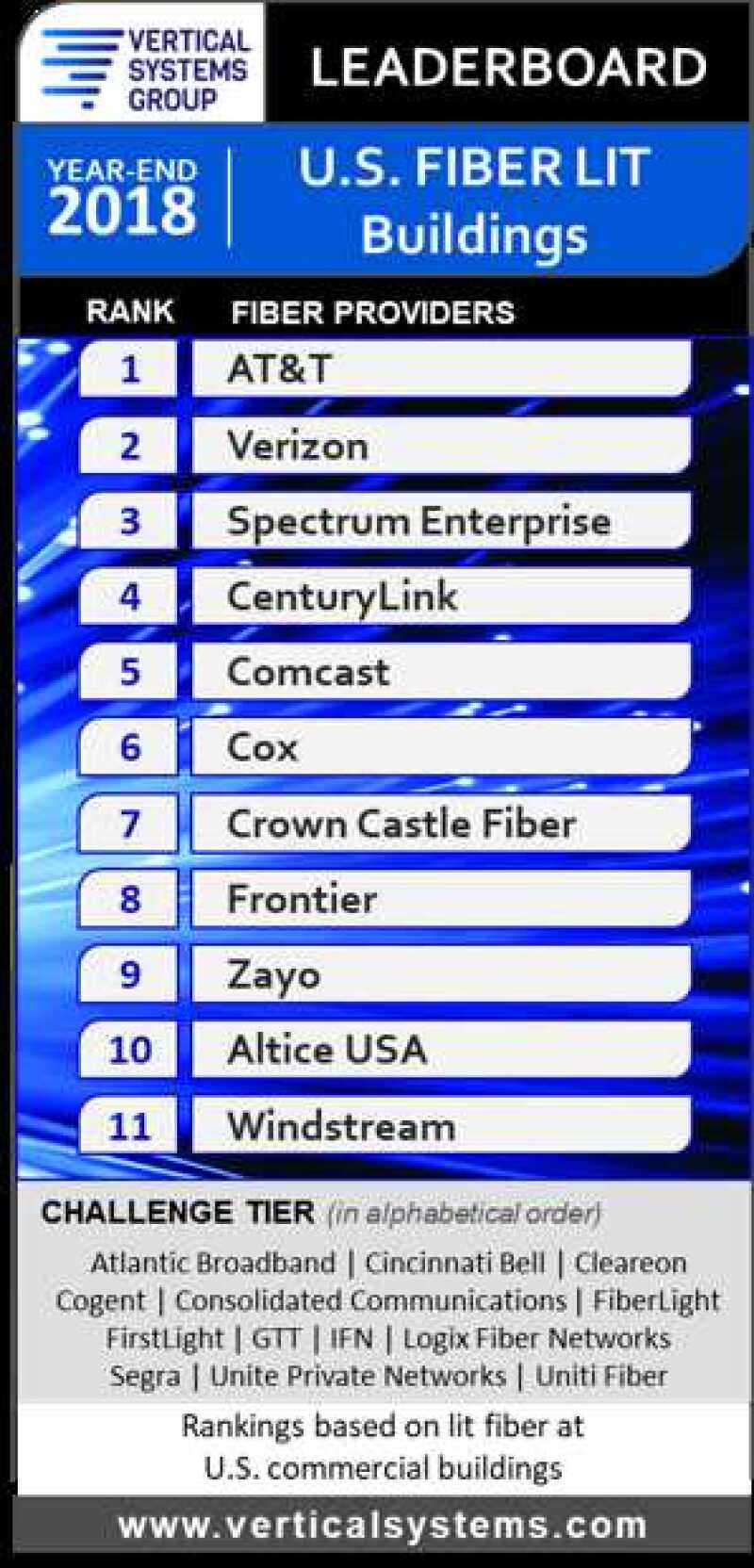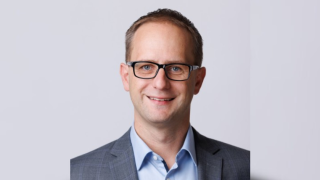The results for the latest US benchmark rankings for 2018, which are ranked in order by number of fibre lit buildings, are as follows: AT&T, Verizon, Spectrum Enterprise, CenturyLink, Comcast, Cox, Crown Castle Fiber, Frontier, Zayo, Altice USA, and Windstream.

These eleven retail and wholesale fibre providers qualify for this benchmark with 10,000 or more on-net US fibre lit commercial buildings as of year-end 2018.
"Following a flurry of mergers and acquisitions, fibre providers focused on new buildouts in 2018 to meet customer demand for higher speed dedicated access to business services and to support 5G pilots," said Rosemary Cochran, principal of Vertical Systems Group.
"Our research shows that while the majority of large and medium size commercial buildings in the US are fibre lit with one or more providers, relatively few small multi-tenant buildings are fibre connected. Cable MSOs and regional network operators have been most actively targeting fibre investment opportunities in this underserved segment."
AT&T retained the top spot for third consecutive year, whilst Frontier and Zayo swapped ranks at eighth and ninth on the leaderboard. Windstream has entered the main leaderboard, moving from the challenge tier of rankings.
Thirteen companies qualified for Vertical Systems Group’s 2018 Challenge Tier. The following companies, in alphabetical order, are fibre providers which have between 2,000 and 9,999 US fibre lit commercial buildings: Atlantic Broadband, Cincinnati Bell, Cleareon, Cogent, Consolidated Communications, FiberLight, FirstLight, GTT, IFN, Logix Fiber Networks, Segra, Unite Private Networks, and Uniti Fiber.
Vertical Systems Group also listed market players, which includes more than 200 metro, regional and other fibre providers with fewer than 2,000 US commercial fibre lit buildings. Some of the companies included on this list are: Armstrong, C Spire, Centracom, Conterra, CTS Telecom, DQE Communications, EnTouch Business, Everstream, ExteNet Systems, Fatbeam, Fusion Telecom, Google Fiber, Hunter Communications, Infostructure, LS Networks, Mediacom Business, MetroNet Business, Monmouth Telecom, Orca Communications, Pilot Fiber, PS Lightwave, Shentel Business, Silver Star Telecom, Syringa, TDS Telecom, TPX Communications, U.S. Signal, Veracity, and WOW!Business.
For this analysis, a fibre lit building is defined as a commercial site or data centre that has on-net optical fibre connectivity to a network provider's infrastructure, plus active service termination equipment onsite. Excluded from this analysis are standalone cell towers, small cells not located in fibre lit buildings, near net buildings, buildings classified as coiled at curb or coiled in building, HFC-connected buildings, carrier central offices, residential buildings, and private or dark fibre installations.





